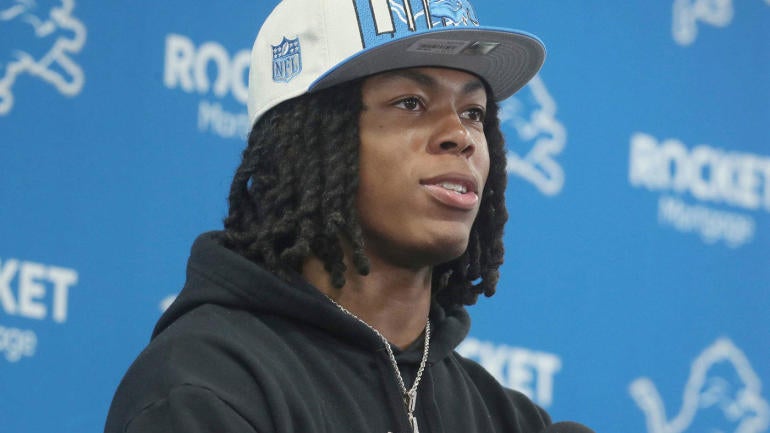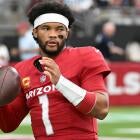
Lions GM says Jahmyr Gibbs is a 'special weapon' who reminds him of Christian McCaffrey, Marshall Faulk
Brad Holmes again says that Gibbs is not just a running back

Back in April, the Detroit Lions made one of the more surprising and controversial selections of the NFL Draft's first round when they nabbed former Alabama running back Jahmyr Gibbs at No. 12 overall.
In the immediate wake of that selection, Lions general manager Brad Holmes was sure to note that his team had big plans for its new talent. He declared of Gibbs, "We didn't acquire a running back in the first round. We acquired an elite weapon to keep our offense explosive."
A few months later, Holmes has reiterated his stance that Gibbs is a "multi-phase, elite, explosive, positionless weapon," and this time he made comparisons to other elite weapons at the running back position.
Holmes told NFL Media, "When I first got with the Rams in 2003, Marshall Faulk was still there, and I was a huge Marshall Faulk guy -- just kind of seeing what he does in both phases. And just from a scouting standpoint, when Christian McCaffrey came out, he was the last guy that I was like, 'Holy cow, this guy can run routes like a slot receiver but also run it.' So, you start getting reminders of those players. I'm not sitting here saying Jahmyr Gibbs is those players, but (he's) just a special weapon like that. We have a lot of excitement and optimism."
As we wrote when Holmes first made his post-draft comments about Gibbs, teams tend to talk about their highly drafted or highly paid running backs this way as a way to justify their investment. But when it comes time to using them that way on the field, it most often just does not actually happen.
Anyway, the idea is that [Bijan] Robinson and Gibbs are so versatile and so explosive that you don't have to just play them in the backfield and hand them the ball. You can throw them the ball, and you can line them up anywhere -- including in the slot or even out wide. The issue there is, well, that is just not really a thing that happens.
For example, according to Pro Football Focus, Robinson lined up slot or wide on just 32 snaps last season at Texas. That's 2.7 snaps per game. Gibbs lined up there considerably more often, but even he did it on just 90 occasions, or 7.5 snaps per game. You might think their NFL teams will utilize them in that fashion considerably more often, but the Falcons and Lions would have to dramatically scale up the usage of running backs in locations outside the backfield from where it has been in recent NFL history.
Since 2017, just three times has a running back lined up in the slot or out wide for at least 10 snaps per game: Christian McCaffrey in 2017, Tarik Cohen in 2019, and J.D. McKissic in 2020. That's it. Cohen and McKissic were part-time players whose roles were near-exclusively about receiving, while that 2017 McCaffrey season was his rookie year, before he became Carolina's full-time starter at running back. Even last season, with McCaffrey playing under position-less football aficionado Kyle Shanahan in San Francisco, he totaled just 108 slot or wide snaps in 17 games (6.4 per game), and that figure led all running backs league-wide.
In other words, the high-level usage of running backs as slot or wide receivers mostly just does not happen. (And there's a reason for this: Actual wide receivers and even tight ends are just better at it, for the most part. To wit: The single-season running back leader in receptions merely 5 or more yards downfield is Jalen Richard, with a grand total of 21 of them in 2018.) And yet, this is part of the rationale for teams selecting them in the top half of the first round this year.
Is it possible the Lions are about to revolutionize running back usage with Gibbs? Sure. Is it likely? Probably not. That doesn't mean he won't be a good player, just that the role the Lions are publicly stating they have in store for him is wildly out of whack with the way teams actually deploy their running backs -- even the ones with "special" skill sets.

















